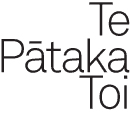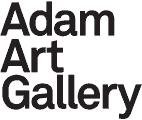Public Programme: Collect/Project
LECTURE
WULF HERZOGENRATH
Curator and project initiator of 40yearsvideoart.de
Adam Art Gallery
Friday 16 May
6pm
Respected curator and project initiator, Wulf Herzogenrath discussed the travelling archive project 40yearsvideoart.de and its intentions to set a standard for the public presentation and the art-historical reappraisal of video art in Germany. The key objective of the resource project involved countering the inevitable deterioration of video art with models of preservation, and then developing the urgently needed processes for its actual restoration. In his lecture Wulf Herzogenrath not only canvassed the material contained within the archive and how it got to be there, but also highlighted some of the restoration methods and techniques developed through working on this project.
Wulf Herzogenrath is director of the Kunsthalle Bremen and an honorary professor at the Hoschschule für Künste in Bremen. From 1989 to 1994 he was the senior curator at the Nationalgalerie Berlin, Staatliche Museen in Berlin, and during this time was involved in the establishment of the exhibition hall Hamburger Bahnhof. He gained his reputation as a curator through staging large survey exhibitions on media art. In 1977 he worked as a curator for documenta 6 in Kassel, which rephrased the question about the position of art in media society, and again in 1987 for documenta 8. Herzogenrath has published numerous books and texts, focusing on the Bauhaus movement, photography, video art and the communication of art.
40yearsvideoart.de is a travelling archive that sets out to comprehensively survey the history of video art made in Germany bringing together the work of 60 artists from the 1960s to the present. It is the result of a major research initiative undertaken by German institutions to ensure the survival and preservation of this medium. 40yearsvideoart.de is presented in partnership with the Goethe-Institut and is being staged simultaneously across three venues: St Paul St in Auckland, the Govett-Brewster Art Gallery in New Plymouth and the Adam Art Gallery in Wellington.
TALKS AND PERFORMANCES
KARANGA VOICES
Collecting Sounds
The Mobile Recording Unit of the NZ Broadcasting Service in Hawera, South Taranaki, 1946
The Mobile Recording Unit was a visionary enterprise in New Zealand, collecting sound, talk and music for broadcast and for future generations. But making an ethnography of the music recorded at this time requires a certain filling in of the record, an awareness of the sounds that the MRU might have thought too obvious to put into their collection, and an understanding of the nuances of performances and what these reveal of the life and times of music and society.
Though the collection is a fascinating glimpse of music (not least in being the works that could be recorded in a few days, without prior warning), it falls short of being a comprehensive soundscape. Allan Thomas discussed the process of creating a fuller ethnography from the Mobile Unit recordings in his work on the music of the town of Hawera in 1946, illustrating with recordings of the performances.
Allan Thomas, who was Director of the Stout Centre in the years 1995 – 1997 has recently retired from the New Zealand School of Music.
TALK: Thursday 22 May
12.30-1.30pm
Stout Centre, Victoria University of Wellington
PERFORMANCE: Adam Art Gallery
Thursday 29 May
1.10-2.00pm
Making Music with Sounds
Five generations of compositions from the Electronic Music Studio
Sounds of the landscape and environment have always proved inspirational for electronic music composers. Sometimes original sounds are allowed to express themselves quite naturally, at other times composers transform the sounds significantly. Representative works show the ‘generations’ from founding composer Douglas Lilburn in the 1960s through to current honours student Anton Killen.
The concert accompanied the Adam Art Gallery’s presentation of Karanga Voices which is a project that follows the same interest in soundscapes, and has developed over the same time span as the studio compositions. The programme was organised and introduced by Paul Doornbusch of the New Zealand School of Music.
Adam Art Gallery
Friday 27 June
LATE NIGHT: 7-9pm
In conjunction with the exhibition of Karanga Voices, the Adam Art Gallery presented a radically different perspective on recording, collecting music, and encountering musical people out in the community: The People’s Mobile Sound Museum. This is a scheme, at present in embryo, which invites the participation of community musicians in the recording and explanation of their art.
Visitors were encouraged to record an item to add to The People’s Mobile Sound Museum’s collection. The People’s Mobile Sound Museum also exhibited sound and film recordings from a recent expedition to Golden Bay and French Pass and archive recordings from the 1946 Mobile Recording Unit.
Talk by The People’s Mobile Sound Museum organisers Chris O’Connor and Daniel Beban.
Improvisation using tracks from Karanga Voices by THE RUBBERNECKS
A group of improvising musicians who are familiar with Karanga Voices and who have already used tracks from this collection extensively in performance again performed an improvisation especially for the Adam Art Gallery. Musicians include Daniel Beban, Chris O’Connor, Alphabethead and Anthony Donaldson.
PERFORMANCE EVENT
RE:CALL
Gray Nicol performs Duck Calling 1978
Thursday 12 June
7pm
New Zealand Film Archive
mediatheatre, 84 Taranaki Street, Wellington
On the occasion of the exhibition, 40yearsvideoart.de, the Adam Art Gallery in association with The New Zealand Film Archive presented an event that unearthed the practice of enigmatic post-object artist Gray Nicol, who re-staged, for the first time in 30 years, his performance work Duck Calling. This absurd and humorous performance was contextualised by a screening of his video works from the 1970s and a discussion of his performance practice. This event brought to light a practitioner from New Zealand’s own history of video art practice, whose work is a playful and reflexive investigation of the video medium, and which resonates with the concerns of contemporary video artists.
WORKSHOP
WORD PLAY: The art of typography
Leading typographers and designers Warren Olds, Duncan Forbes, Kelvin, Soh, Kris Sowersby and Sarah Maxey in conversation. Chaired by Catherine Griffiths.
Saturday 12 July
2-4pm
Adam Art Gallery
What inspires and informs the type designer and user? How do the artist, the type designer and the typographer develop philosophies about communicating the visual forms of type language?
This discussion workshopped thoughts and ideas on what informs the practice of typography and the research methods and strategies used to implement type form. The workshop provided a forum to discuss what informs New Zealand type design and practice to reveal what generally goes unnoticed by the reader. The conversation drew out research methods and the processes of re-visioning new and existing forms as a means to expand audiences’ understanding of the communicative power of type.
Warren Olds is a graphic designer and typesetter of art from Freemans Bay, Auckland.
Duncan Forbes is a graphic designer for the modernist inspired studio Experimenta
Kelvin Soh is a graphic designer, artist, curator and one half of Auckland based design group ‘The Wilderness’.
Kris Sowersby is an independent type designer, typographer and graphic designer. Based in Wellington, he runs the KLIM Type Foundry and is Type Director for The Letterheads Ltd.
Sarah Maxey is one of New Zealand’s most prolific book designers, graphic designers and lettering artists. Her signature works are hand-lettered literary book covers – www.sarahmaxey.co.nz
Catherine Griffiths is an independent and internationally-recognised typographer and designer. She is currently intent on bringing the world of typography across the disciplines to Wellington to share in New Zealand’s first-ever international typography symposium, TypeSHED11.


